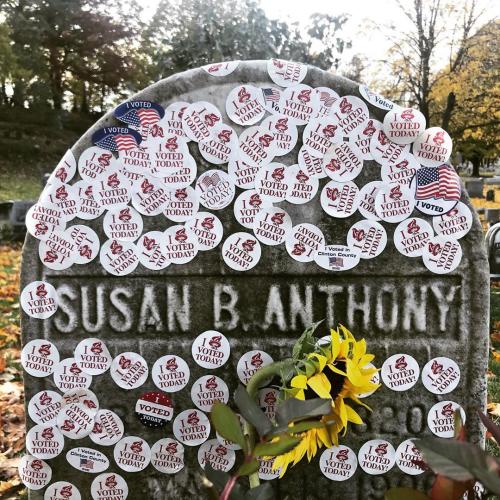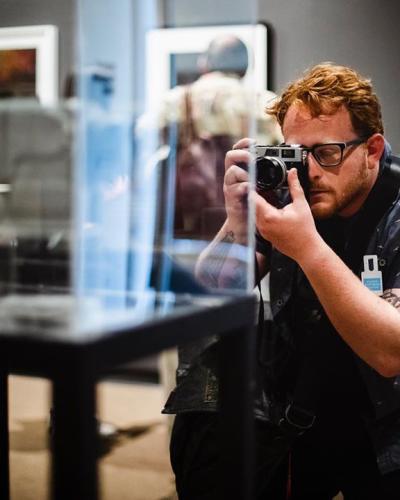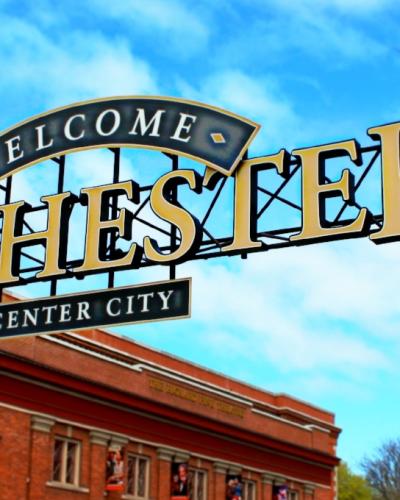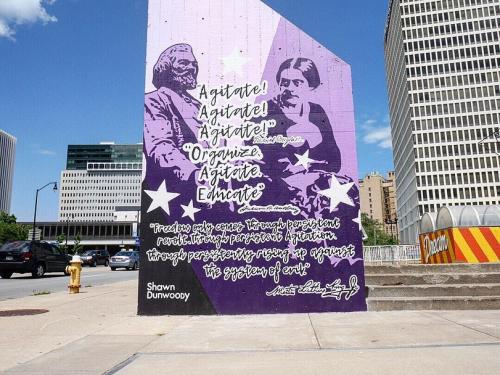What do you think of when you hear the name Susan B. Anthony? Women’s suffrage? The abolitionist movement? While these were indeed the issues Susan was most passionate about, many are unaware that she put her life on the line, traveling thousands of miles a year to make speeches intended to change hearts and improve lives. There are so many powerful stories that made her one of the world’s greatest revolutionaries—and significant moments in history took place at 17 Madison Street in Rochester, NY—a place she called home for 41 years.
Today, the location is a National Historic Landmark, the highest historic designation given to a private home. We recently interviewed Deborah Hughes, President and CEO of the Susan B. Anthony Museum and House, who was originally drawn to work for the museum based on its mission—a long-standing commitment to telling the story of Susan B. Anthony and inspiring people to continue to work for social change. Hughes’s 15 years of experience with the organization offers a close look at what makes this attraction a powerful true story for the ages.

What can people expect when they visit?
Visitors can make an online reservation to take a 45-minute tour starting at the Visitors Center at 19 Madison Street (a site that was the home to Susan’s sister Hannah) and then moving onto the Susan B. Anthony House right next door. Led by a docent, visitors will learn the home’s significance and how the issues Susan was so passionate about are still relevant today.
It’s not an object-based tour, but rather a space-based tour that gives a sense of scale and is more about the stories that engage people on who Susan was. The press referred to her as a lightning rod, a description that is a stark contrast to her stern images common in 19th century photography. One article even noted that “When Anthony enters the room, it ups the fun barometer.”
When it comes to some historic house sites, visitors pay a visit once every 20-30 years. However, we have the opposite. Locals often return with friends and family, especially because of how the site touches the heart of people. You can take the same tour but hear the story told differently each time.
What do you think surprises people most when they visit?
People are often quite moved, sometimes to tears. Many feel goosebumps when they hear they are standing in the room where Susan was arrested for voting in 1872. When she was elected president of the National American Woman’s Suffrage Association in 1892, her home became the headquarters for the organization—two years later, the first-floor parlors became public offices, while guest rooms were used for mail. A sense of hope and gratitude are words that bubble to the surface for visitors. There is nothing like the power of place.

What types of comments have you heard from visitors that stand out?
We often hear feedback such as:
- “I had no idea what she went through.”—one guest’s comment pertaining to what was life was like in the 19thcentury—it wasn’t little house on the prairie.
- “My sister dragged me here and it was the best experience that day.”
- “Why wasn’t I taught this in school?”
- One woman even showed up in cap and gown. She explained to us that she came here for one of our women’s programs and was homeless at the time. When she heard about what Susan and other women had endured, she became empowered change her own life. She came back to the Susan B. Anthony House on her graduation day to say thank you and tell us that had just received her master’s degree.
What age groups are you seeing most?
We see all ages come through the doors—from children to seniors. It’s not unusual to have multi-generational groups and school groups. While most second graders don’t have a concept of time, they do understand justice. We ask them what do they do when they understand something isn’t fair? When Susan B. Anthony experienced this, she wanted to change it. Fifth graders learn about friendships, how to educate and organize. Susan B. Anthony believed you had change hearts before you could change laws and we help kids think about strategies to change the world. Docents engage visitors and invite them to reflect—ultimately, they help people make a connection to the experience in their own way.
Families will often participate on the tour, and then head to the nearby Susan B. Anthony Square Park to see the larger-than-life sculpture of Susan and Frederick Douglass having tea (did you know they were friends?). Adding on a visit to Mt. Hope Cemetery is also common, where visitors can see Anthony and Douglass’s graves.
When is the most popular time to visit?
There is programming and tours offered year-round. We have more local and regional visitors during the winter. Celebrating Susan B. Anthony’s birthday is a tradition that began in her lifetime and continues to this day. Born on February 15, a birthday celebration and fundraiser is held each February, (past years have accommodated up to 1,200 guests) to continue her legacy and raise awareness of the educational and inspirational programs offered by the museum. The 202nd event took place on February 9, 2022 at the Joseph A. Floreano Riverside Convention Center.
We also offer a Monday Lecture Series, where guest speakers will present on timely topics inspired by the life, work, and legacy of Susan B. Anthony. The series is offered on specific Mondays at 1:00 pm EST throughout June and visitors can choose to attend in person or tune in from around the world.
We frequently sell out during the summer, which is a great time of year to spend time exploring the neighborhood.

Can you tell me more about the neighborhood? What else is nearby to explore?
We are in an urban city neighborhood, with a lot of pride—you may see people wearing t-shirts that say—Freedom Lives Here. People will walk around the Corn Hill area to look at the architecture of one the oldest recorded neighborhoods in the city with original brick homes and views of downtown. Bring a picnic lunch—or the 1872 café is fun spot adjacent to a memorial sculpture that marks the location where Susan and 14 other women voted in the 1872 presidential election. There is also the Heritage Trail, a 1.25-mile long walking path that leads visitors to 15 points of historical significance in downtown Rochester.
Whether your interest is in further exploring women’s history, politics, transportation, social justice, or arts and culture, there are an incredible number of sites and attractions to discover not only in Rochester, but also across the Finger Lakes and into Jamestown, which was home to Lucille Ball.
Q. Where are visitors coming from?
A. We have often made assumptions that people come to Rochester for another event. However, the Susan B. Anthony House is often the reason for the visit so people can learn about a woman who took on the world and whose story is still relevant today.
People come from all over because they want to see the historic landmark and to learn more about Susan. We have been a part of planned vacations and one couple who traveled to New York City from Japan decided to take the one-hour flight to come see the museum. Motorcoach tours carrying travelers with broader interests also come through.
Q. Do you have any projects in store for the future?
A. We just acquired property for a new interpretive visitor’s center and are in the planning stages for a location that is scheduled to open in the next three years.
Q. What do you want visitors to take away from their visit?
A. A visit to the Susan B. Anthony Museum and House brings out the best in people to make things better for others, and we need those kinds of heroes.
Susan had amazing hope for humanity and my hope is that visitors feel better about dealing with the reality that we are living through and are inspired to continue Susan’s work. She would get letters saying, “I can never do what you do.” If everyone of us would do one thing we have time and talent for, it would make such a difference. That’s the piece we hope they connect with most.






